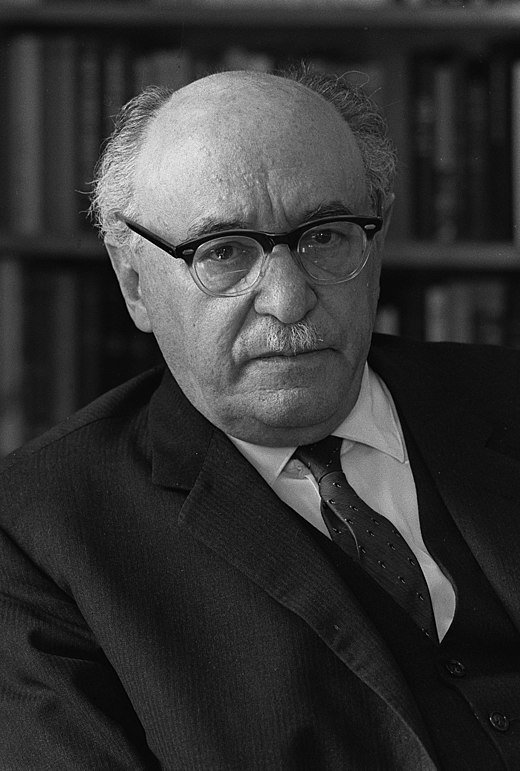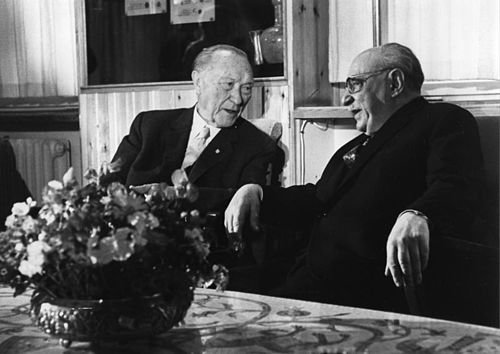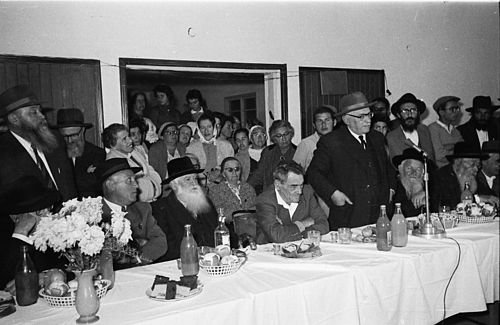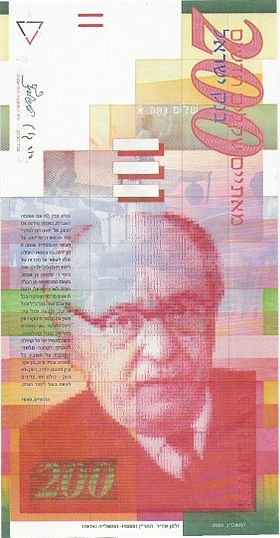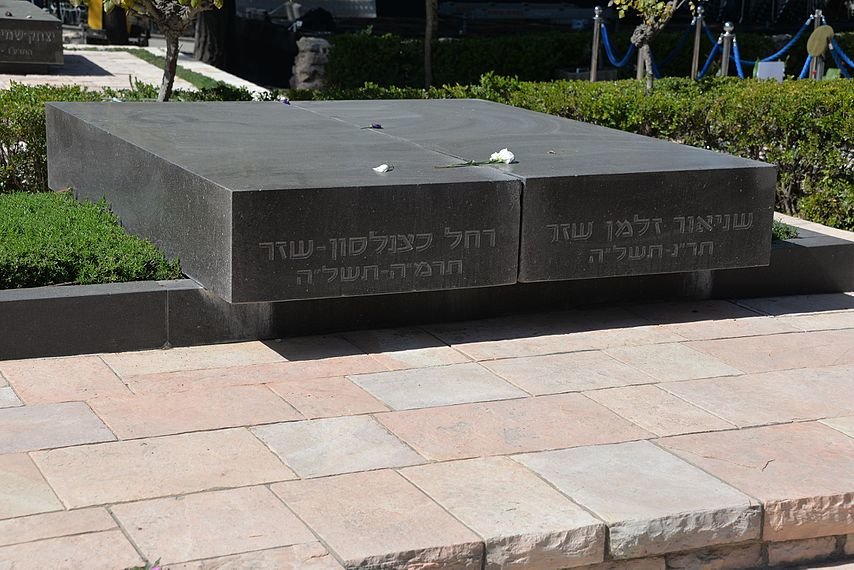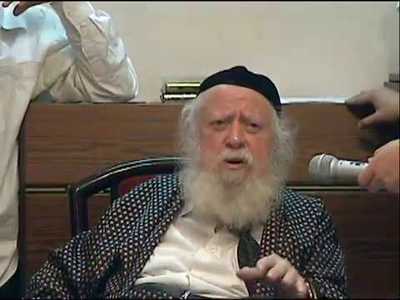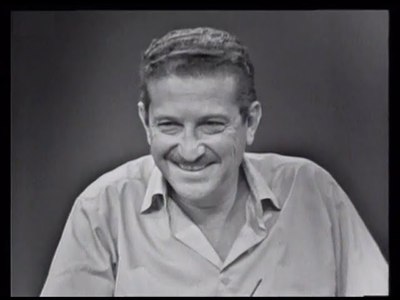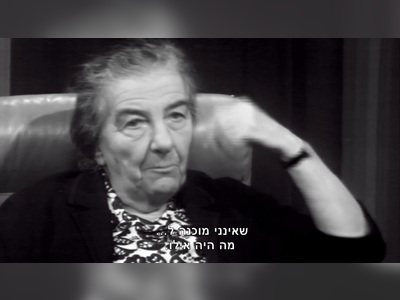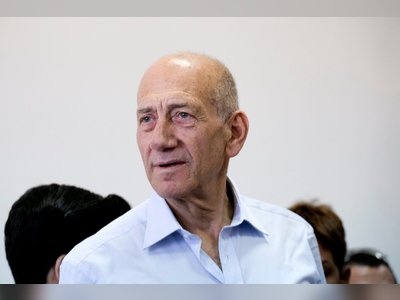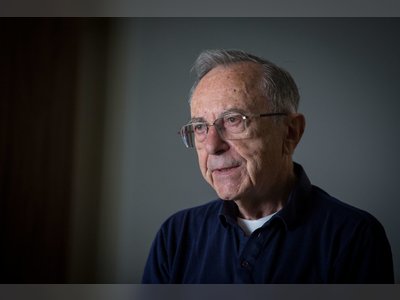Zalman Shazar: The Third President of Israel
Zalman Shazar, originally Shneur Zalman Rubashov (in Yiddish: Rubashov; November 24, 1889, Mir, Grodno Province, Russian Empire – October 5, 1974, Jerusalem), was the third President of the State of Israel. He was a writer, poet, historian, Zionist leader, Member of the Knesset, and Minister of Education and Culture in the first Israeli government.
Early Life in Europe
Shazar was born as Shneur Zalman Rubashov on November 24, 1889, in the town of Mir, located in the Grodno Province of the Russian Empire (later part of Hrodna District, Belarus). He was born into a rabbinical family with Chabad Hasidic roots. He was the fifth generation in his family. Later in life, he changed his family name to "Shazar," using the initials of his full name, following a suggestion by Rabbi Shmuel Aharon Shazar.
His childhood was spent in the town of Stawiski, where he began to learn the Hebrew language, literature, and culture. At the age of 14, in 1903, he published "HaYarhon: Ivrit Newspaper – A Zionist Organ," which he wrote by hand and distributed in his town and the surrounding areas. In 1905, at the age of 16, Shazar joined the Zionist movement "Poale Zion" in Stawiski. During the reign of the Russian Tsar, he faced restrictions on his pro-socialist journalistic activities.
From 1908 to 1912, Shazar studied at the Academy of Jewish Studies in Saint Petersburg. It was during his time in Petersburg in 1909 that he first met Rachel Katznelson, who later became his wife. The couple had one daughter, Ruhama, who suffered from Down syndrome. In 1910, he served as the secretary of the Rabbinical Conference held in Saint Petersburg, which addressed issues related to Russian Jewry.
In 1911, Shazar visited the Land of Israel for the first time, spending several months there. During his stay, he became acquainted with the Hebrew poet Rachel, and they even developed a romantic connection.
Some scholars suggest that Shazar was the subject of Rachel's poem "Gan Na'ul" (A Locked Garden), which expressed her pain over his reluctance to help her. Rachel dedicated the poem to "Zer," an acronym for Shazar's previous full name (Zalman Rubashov), and his behavior towards her, portraying him as a stranger without revealing his identity.
After this visit, Shazar became actively involved in Zionist congresses, Jewish conferences, and international socialist gatherings. He was elected to the Poale Zion Committee in Stawiski. However, as the situation in Russia became more difficult for Jewish activists, Shazar moved to Germany, where he joined the Zionist labor movement and the organization known as "HaChalutz" (The Pioneer).
From 1912 to 1919, he studied history and philosophy at universities in Freiburg, Strasbourg, and Berlin. In May 1920, he married Rachel Katznelson in Jerusalem.
Settlement and Government
In 1924, Shazar immigrated to the Land of Israel and continued his involvement in the Labor Unity Party, which was formed by merging Poale Zion with non-party workers. He was also one of the founders of Mapai (the Workers' Party of the Land of Israel), which later became part of the Labor Party. Shazar served on the editorial board of the newspaper "Davar," which was the official newspaper of the Histadrut (the General Federation of Labor).
After the death of Berl Katznelson in 1944, Shazar was appointed as the chief editor of "Davar," a position he held until 1949. He also served as the director of the Am Oved publishing house and was a member of the Jewish Agency's Executive and the head of the Department of Education and Culture of the World Zionist Organization.
In 1945, following the Black Sabbath events, when members of the Jewish Agency Executive were arrested in Palestine, a temporary leadership of the Jewish Agency was established in Israel. Shazar was appointed as one of its members, along with Levi Eshkol and Rabbi Meir Bar-Ilan. During this time, they approved the establishment of 11 points in the Negev desert, an initiative led by Levi Eshkol.
These points were established on Yom Kippur of 1946 and played a significant role in the recommendation by the United Nations Special Committee on Palestine (UNSCOP) to include the Negev in the Jewish state.
When Israel became a state, Shazar was elected to the First Knesset and was appointed as the Minister of Education and Culture in the first Israeli government. During his tenure, he played a key role in enacting compulsory education legislation.
However, controversies arose regarding the nature of the educational system in Israel, specifically whether it should be a unified state system or follow different ideological streams.
Another crisis in the education of children in immigrant camps led to the formation of the Promekin Committee in October 1950. Following the publication of the committee's findings, Shazar did not continue as Minister of Education in the subsequent government formed shortly thereafter.
Shazar served as a Member of Knesset in the Second and Third Knessets as well.
Presidency
After the death of President Yitzhak Ben-Zvi in 1963, Shazar was elected as the President of the State of Israel and took office on May 21, 1963. In 1968, he was reelected for a second term, which ended on May 24, 1973.
During his presidency, Shazar maintained a low-profile and stayed behind the scenes in political matters. He was known for his intellectual pursuits and his passion for education and culture.
He played a crucial role in founding the Bible Research Society in Israel, and under his influence, David Ben-Gurion established the Bible Study Group during his presidency. He also initiated the establishment of the "Am Oved" Foundation to support the publication of Hebrew literature.
Shazar was the first Israeli president to host foreign royal visits, including those of John F. Kennedy and Winston Churchill. In 1964, Pope Paul VI visited Israel, marking the first papal visit to the country. During the reception ceremony, Shazar quoted a verse from the book of Micah, which became significant in the context of interfaith relations in Israel.
Legacy
Zalman Shazar passed away on October 5, 1974, and was buried on the Mount of Olives in Jerusalem. He was remembered as a statesman, writer, poet, historian, and cultural leader who made significant contributions to the development of the State of Israel and its cultural heritage. His intellectualism and focus on education and culture left a lasting impact on Israeli society.
Rachel Katznelson, Shazar's wife, was a prominent cultural figure in her own right. She was a renowned Hebrew poet, writer, and translator. After her husband's death, she continued to be active in cultural and literary endeavors in Israel.
Zalman Shazar's presidency is often characterized by his emphasis on education, culture, and fostering the nation's intellectual and literary pursuits. He played an important role in the early years of the State of Israel, contributing to the shaping of its cultural identity and institutions. His life and work are celebrated as part of Israel's rich history and cultural heritage.
- זלמן שזרhe.wikipedia.org
